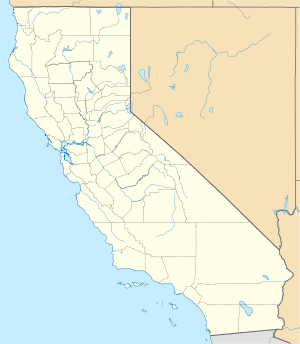Ross Field (airfield)
| Ross Field Arcadia Intermediate Landing Field |
|
|---|---|
| Arcadia, California | |

Army Balloon School at Camp Ross, California, 1918
|
|
| Coordinates | 34°07′46″N 118°02′24″W / 34.12944°N 118.04000°WCoordinates: 34°07′46″N 118°02′24″W / 34.12944°N 118.04000°W |
| Type | Pilot training airfield |
| Site information | |
| Controlled by |
|
| Condition | Redeveloped into urban area |
| Site history | |
| Built | 1918 |
| In use | 1918–1940 |
| Battles/wars |
World War I |
| Garrison information | |
| Garrison | Training Section, Air Service |
Ross Field is a former World War I military airfield, located 0.8 miles (1.3 km) south-southwest of Arcadia, California. It was one of thirty-two Air Service, United States Army training camps established after the United States entry into World War I in April 1917. It operated as a training field between 1918 until 1919.
In the early part of June 1918, the Army established an airfield at Arcadia, on the site of the Santa Anita Race Track. it was commanded by Col. W. M. Hensley. Within days, two Balloon Companies from Camp John Wise, San Antonio, Texas; three Balloon Companies from Fort Omaha, Nebraska; and the men of two Balloon Companies from Kelly Field, Texas, arrived and erected a tent camp. Training began quickly and balloons were in the air by the end of June. The hydrogen plant to produce the gas needed to fill the balloons was on line by the end of July. By the end of summer most of the building construction had been completed.
In the rush to get an Army Balloon School on the west coast, the Signal Corps did not consider the Santa Ana winds, which blew in from the desert. These winds created much havoc with the aerial observation, ground training, and balloon handling. They were limited as to how high the balloons could be flown on those very windy days. In order to simulate high altitude observations, they would truck the officers to a camp site at the top of Mt. Wilson to observe live artillery fire from the field below the mountain. The altitude of Mt. Wilson was similar to that of being in a balloon basket. but without the handling issues caused by high winds.
The school was named in November, after Lt. Cleo J. Ross, Army's Air Service: an observer with the 8th Balloon Company. On 26 September 1918, near Brabant, France: while aloft with Lt. Herbert Hudnut, they were attacked by a German Fokker pursuit aircraft, and their balloon burst into flames. Lt. Ross delayed his jump until Lt. Hudnut was clear. After Lt. Ross left the basket, some burning balloon pieces dropped onto his opened parachute: he fell to his death from three thousand feet. Lt. Ross was the only U. S. Army balloon pilot or observer to be killed in action. He was buried in France, near where he fell. None of the companies from Ross Field were assigned for overseas service.
...
Wikipedia

